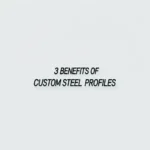.cp-article-2-content { font-family: Arial, sans-serif; }
.cp-article-2-text { margin-bottom: 1.1em; line-height: 1.65; font-size: 1.05rem; color: #333; }
.cp-article-2-list { margin-left: 25px; margin-bottom: 1.1em; list-style-type: disc; }
.cp-article-2-list li { margin-bottom: 0.6em; }
.cp-article-2-heading { font-weight: bold; color: #2c3e50; margin-top: 1.2em; margin-bottom: 0.5em; font-size: 1.15rem; }
.cp-article-2-highlight { background-color: #e9f5ff; padding: 2px 5px; border-radius: 3px; font-weight: 500; }
.cp-article-2-link { color: #007bff; text-decoration: none; font-weight: bold; }
.cp-article-2-link:hover { text-decoration: underline; color: #0056b3; }


The primary purpose of a checkered plate, also commonly referred to as tread plate, floor plate, or diamond plate, stems from its distinctive raised pattern on one side. This pattern is not merely aesthetic; it serves several crucial functional roles.
Key Purposes:
- Enhanced Slip Resistance: This is arguably the most important function. The raised lugs or diamonds disrupt the smooth surface, providing significantly increased traction underfoot and for wheeled traffic. This drastically reduces the risk of slips and falls, especially in environments prone to wetness, oil, mud, or other hazards. It’s widely used for industrial flooring, walkways, stairs, ramps, and truck beds.
- Increased Durability and Wear Resistance: The raised pattern adds a degree of rigidity and helps distribute wear more evenly across the surface compared to a flat plate of the same thickness. This makes steel plate more resistant to damage from foot traffic, rolling loads, and impacts, extending its service life in demanding applications.
- Structural Support: While primarily a surface material, the inherent strength of the base steel (like A36) combined with the pattern provides structural integrity. It can be used as self-supporting flooring over short spans or as durable covering over existing structures.
- Protection: Checkered plate is often used as protective covering for walls, corners, columns, and machinery in high-traffic areas like warehouses, factories, and loading docks, guarding against scrapes, dents, and impacts.
- Drainage and Debris Channeling: The pattern can help channel away small amounts of liquid or allow fine debris to fall through gaps when used in certain grating-like applications, contributing to a cleaner and safer surface.
- Aesthetic Appeal: In some contexts, particularly with aluminum or stainless steel checker plate, the distinct pattern is valued for its industrial or rugged aesthetic. It’s used decoratively in architectural design, vehicle customization (toolboxes, running boards), and retail fixtures.
In summary, the checkered plate is a versatile material designed primarily for safety and durability. Its raised pattern provides essential slip resistance, making it indispensable in industrial, commercial, and transportation settings where preventing accidents is paramount. The added benefits of wear resistance, protection, and structural contribution further solidify its utility across a wide range of applications.
What is the purpose of checkered plate? — This article provides a practical buyer‑focused overview with specifications, selection tips, and on‑site considerations. Explore related topics: blog.
Key Specifications and Standards
- Standards: ASTM / EN / JIS (e.g., ASTM A240/A36, EN 10088/10025, JIS G4304/G3131).
- Surface options: 2B, BA, No.4, HL, mirror; galvanized (electro / hot‑dip).
- Processing: hot‑rolled, cold‑rolled, annealed & pickled, welded or seamless.
- Typical services: slitting, shearing, cut‑to‑length, drilling, beveling, deburring.
- Documentation: MTC, CO, packing list with net/gross weight and heat numbers.
Typical Applications
Construction, machinery, automotive, energy, enclosures and fencing, food equipment (for stainless), and general fabrication. Match grade and finish to corrosion, strength, and appearance requirements.
Selection Guide
- Use certified material with Mill Test Certificate (MTC).
- Confirm standards (ASTM/EN/JIS) and tolerances per drawing.
- Match surface finish to application (2B/BA/No.4/galvanized).
- Specify dimensions and acceptable deviation upfront.
- Plan packaging and corrosion protection for transit.
Processing, Packaging and Logistics
We adopt edge protection, waterproof wrapping, rust‑inhibiting paper, fumigated pallets, and strapping suitable for sea freight. Loading photos and weight lists are provided for each shipment.
FAQs
Q: What lead time can I expect?
A: Typically 7–15 days ex‑works for standard sizes; custom processing may extend the schedule.
Q: Can you provide cut‑to‑size service?
A: Yes. We slit, shear, cut, drill, bevel and deburr to drawing to reduce waste and speed installation.
Q: How do you ensure quality?
A: Incoming inspection, process control, and final inspection with traceable heat numbers; third‑party inspection is available.
Q: Do you support small trial orders?
A: We support pilot quantities with consolidated shipping to control cost.
All values are typical and for guidance only; confirm with the datasheet and purchase order before production.
Related products: view details.
Related products: view details.





